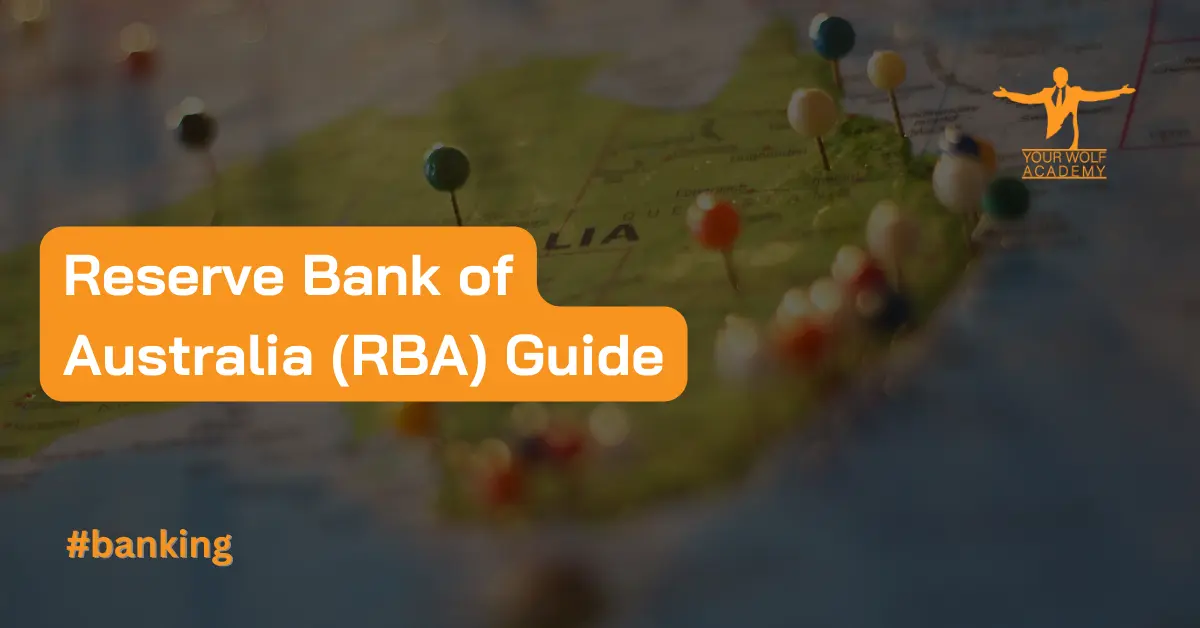The Reserve Bank of Australia (RBA) is the central bank of Australia, established in 1960 to oversee the country’s monetary policy, issue currency, and maintain financial stability. The RBA’s primary objective is to ensure price stability and full employment, while also promoting economic prosperity and the welfare of the Australian people.
This comprehensive guide provides a detailed overview of the RBA, including its history, structure, roles, functions, and monetary policy operations.
History of the RBA
The RBA was established in 1960, following the Reserve Bank Act of 1959, which repealed the Commonwealth Bank Act of 1911 and dissolved the Commonwealth Bank of Australia.
The RBA was given the responsibility of overseeing Australia’s monetary policy, regulating the banking system, and issuing currency. The first Governor of the RBA was H.C. (Nugget) Coombs, who served from 1960 to 1968.
Structure of the RBA
The RBA is governed by a board of nine directors, including the Governor, the Deputy Governor, and seven non-executive directors appointed by the Australian government. The Governor and Deputy Governor are appointed by the government and serve five-year terms, which are renewable.
The RBA also has a number of departments responsible for its various functions, including the Financial Markets Group, Economic Analysis Group, Payments Settlements Department, and Corporate Services Department.
Roles and Functions of the RBA
The RBA has several important roles and functions, including:
- Conducting Monetary Policy
One of the RBA’s primary roles is to conduct monetary policy to achieve its mandate of price stability and full employment. The RBA uses a range of tools, including setting the cash rate, influencing short-term interest rates, and managing the supply of money and credit in the economy.
- Issuing Currency
The RBA is responsible for issuing and managing the supply of Australian banknotes and coins. It ensures that the currency is of a high quality and difficult to counterfeit.
- Regulating the Financial System
The RBA is responsible for regulating the financial system in Australia to promote stability and efficiency. It supervises banks and other financial institutions, provides payment and settlement services, and oversees the operation of Australia’s payment system.
- Advising the Government
The RBA provides advice to the Australian government on economic and financial matters, including monetary policy, financial stability, and the regulation of the financial system.
- Conducting Research and Analysis
The RBA conducts research and analysis on economic and financial issues, including inflation, monetary policy, and financial stability. It publishes research papers and other publications to inform the public and policymakers.

Monetary Policy Operations of the RBA
The RBA conducts its monetary policy operations through a range of instruments and strategies, including:
- The Cash Rate
The RBA sets the cash rate, which is the overnight interest rate on loans between banks. Changes in the cash rate influence short-term interest rates and the cost of borrowing and lending in the economy.
- Open Market Operations
The RBA conducts open market operations to manage the supply of money and credit in the economy. It buys and sells government securities in the open market to influence the level of reserves in the banking system and, therefore, the supply of money.
- The Term Funding Facility
The RBA provides low-cost funding to banks through its Term Funding Facility (TFF). The TFF was introduced in March 2020 to support the economy during the COVID-19 pandemic. It provides low-cost funding to banks for up to three years, with the aim of encouraging lending to businesses and households.
- The Reserve Bank of Australia’s Balance Sheet
The RBA’s balance sheet shows its assets and liabilities, including government securities, foreign exchange reserves, and loans to banks. Changes in the RBA’s balance sheet can affect the supply of money and credit in the economy, and therefore, inflation and economic growth.
- Forward Guidance
The RBA provides forward guidance on the likely future path of monetary policy to help households and businesses plan their spending and investment. It does this by publishing statements and speeches by the Governor and other senior officials.
Recent Developments and Challenges
The RBA has faced several challenges in recent years, including low inflation, sluggish economic growth, and the impact of the COVID-19 pandemic. In response, the RBA has implemented a range of measures to support the economy, including cutting the cash rate to record lows, providing low-cost funding to banks, and conducting large-scale asset purchases.
Despite these measures, the RBA faces ongoing challenges in achieving its objectives of price stability and full employment. Inflation has remained below the RBA’s target range of 2-3% for several years, and the labor market is still recovering from the impact of the pandemic.
Conclusion
The Reserve Bank of Australia plays a crucial role in ensuring the stability and prosperity of the Australian economy. Its responsibilities include conducting monetary policy, issuing currency, regulating the financial system, advising the government, and conducting research and analysis.
The RBA faces ongoing challenges in achieving its objectives, but it has a range of tools and strategies at its disposal to support the economy and promote price stability and full employment.
Your Wolf Academy offers a range of educational resources to help traders succeed, including free signals, technical analysis, and weekly webinars. Sign up today and get a recommendation for a regulated brokerage company that suits your needs.


